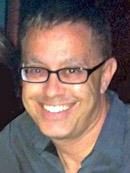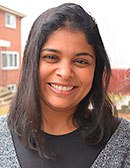
THE BRIDGE TO COLLEGE
Concerns About BS/MD

Advanced medical programs – often called BS/MD or BA/MD – are hybrids of undergraduate studies and medical school. For those wishing to become a doctor, BS/MD is a popular option. However, we often worry that pursuing BS/MD is the wrong effort for a student.
Those who wish to study medicine often believe that BS/MD starts them faster on their life path. That is usually incorrect. Most undergraduate universities have the flexibility to study the same courses as those offered in an advanced medical program. You can choose to take BS/MD courses in an undergraduate program, and BS/MD programs are not always shorter than an undergraduate-to-grad school path.
However, advanced medical programs usually provide few options to pursue electives, which can broaden your transferable skills and inspire you to achieve in different ways. Be careful to ensure that a BS/MD program has the flexibility you want to obtain the breadth of education you need.
Further, BS/MD programs lack environmental diversity. Students who stay in one place and study at one university for six to eight years often burn out. At the least, attending only one university limits the resources and influences that can develop you holistically.
Many students and families feel that pursuing BS/MD is a wise way to avoid the competitiveness of medical school admissions. This mindset is folly. Gaining admission to an advanced medical program as a high school senior is much more difficult to achieve than gaining admission to medical school after four years of college training. In almost every case, BS/MD programs are limited to a few dozen students, or fewer. With so few spots, admission is exceedingly competitive.
Unfortunately, the competition can be unfair. Because these programs are admitting students to graduate school, their admissions focus is on experience, not just grades. For high school students with the most challenging curricula, there is little or no time to gain experience through research, shadowing, and other medicine-related pursuits. The boxed schedule of high school – and the legal limits preventing participation before age 16 – doesn’t leave much time for doing the things BS/MD wants to see. Applicants are competing nationally and internationally, not just locally, so even the most robust resumes usually aren’t enough.
Still, why not try? There are hidden challenges. Pursuing an advanced medical program can actually hurt a student’s chances at the best possible education. BS/MD applications are more demanding, and completing them can cause significant fatigue. Whether because of the pursuit of advanced programs or simply too many undergraduate applications, we usually see the quality of student applications collapse as the admissions season takes its toll. It is true that filing more applications increases your chances … of being rejected. Any work that is not top-quality leads to sub-par results.
Nevertheless, there is an important advantage to some advanced programs. The shorter programs (some are 6-year or 7-year programs) might save money when compared to full-length programs or to the undergraduate-to-grad school path. However, if the yearly cost of an advanced program is more expensive than what you can pay for a fine university education, then that savings is a mirage.
Watch out for the traps in the BS/MD world. Although some programs dispense with the need to take the MCAT, others still require the MCAT before acceptance to the graduate level. Also, when applying Early Decision to a program like Brown University’s Program in Liberal Medical Education (PLME), note that you will be bound to attend Brown if the school decides to admit you to their undergraduate program instead of PLME.
Universities may be non-profit corporations, but they are still corporations. Despite their educational purposes, they have economic needs. In many cases, advanced medical programs are little more than a way to market a university’s medical prowess: “We have BS/MD, so we must be a good medical school!” Don’t be distracted by things that are designed to play upon your desires. Whether through an advanced medical program or undergraduate studies, be sure that your educational path fits your needs in the best possible way.
Robert A.G. Levine, president of Selective College Consulting Inc., can be reached at (813) 391-3760, email [email protected] or visit www.SelectiveCollegeConsulting.com
FAMILY MATTERS
Why Age Shouldn’t Factor into Child’s Play

With no malls, movie theaters or just about any recreational facilities available to us in 1980s Lusaka, Zambia, our primary entertainment consisted of other people. On Friday and Saturday evenings, starting at around 6 and maybe lasting till 9 (which is when people headed off to dinner parties), the doorbell would ring and families would show up at your door for a visit. No one called ahead, so you never had any idea who you might encounter in your own or someone else’s house. Occasionally, families would overlap, and you’d end up with 25 unannounced guests at a time. Plates of samosas or banana chips were dispensed. Dads drank whiskey, mothers nursed a gin and tonic or juice, and as for us kids, we either crammed into crowded bedrooms or spilled outside raucously to play, a motley collection of ages, a baby balanced on a teen’s hip and older ones holding littler one’s hands and finding roles for them in whatever game we cooked up together. No one cared if you were 5, 10 or a lofty 15 years old with notions of privacy and a novel to read; if someone came over with a toddler and preschooler, they were immediately dispatched upstairs for you to entertain.
As it turns out, without realizing they were doing it, our parents were forcing us to engage in multi-age play, something anyone raised in a joint family or apartment building probably experienced on a daily basis. Here and today, it seems to be on the decline. Rather than playing with a ragtag assortment of whichever kids come outside to play in the evening, we drive our children to activities sorted by age group or to play dates with classmates. As children get to the end of middle school, they appear less frequently at weekend family and cultural events because — their parents explain apologetically — there is no one here their age to hang out with and they need to be with their friends.
This wasn’t always the case. According to a 2014 Boston Globe article entitled, “What Age Segregation Does to America,” Americans remain pretty age-integrated until the Industrial Revolution. “Families were bigger, generations often worked side by side, and kids and adults got their entertainment at the same county fairs,” writes Globe reporter Leon Neyfakk.
This type of age mixing was beneficial to everyone on the age spectrum. In a 2011 issue of the “American Journal of Play,” Peter Gray explains that younger children benefit from multi-age play by being exposed to more complexity in information and role models while the ones on the older side learn to nurture, develop creativity and expand their understanding through teaching when interacting with littler kids. There’s even evidence to show that kids who play and study only in same-age groups are more aggressively competitive while those in mixed-age groups are more nurturing and cooperative.
A peer bubble — while it can provide a support system of people who are “in it together”— can also be a trap, an echo chamber of other teens with the same insecurities and priorities who can’t escape constant judgment and scrutiny. Even when kids physically leave school, the dialogue continues across multiple social media platforms. There’s no escape: Just ask a kid who’s spent an evening staring at the Instagram feeds of all his friends having a blast at an event to which he hadn’t been invited. Interacting with those outside that bubble can be a much-needed escape from the pressure cooker, whether it’s with a young neighbor or sibling, older cousins, a grandparent or the auntie who’s your mom’s best friend. Spent an entire morning at school stressed about college applications? A conversation with a peer will likely revolve around the same subject, serving only to ratchet up the anxiety, but an hour spent shooting hoops with the little kid next door who has only fidget spinners on the mind may come as a welcome relief. The pain of a morning spent being ignored by the mean kids in the lunchroom might be soothed in the company of a grandparent who thinks you’re God’s gift to the world. The always-in-control teen can let down his guard when a college-age family friend comes over to hang out; the shy and diffident kid can be a superhero to someone four years younger.
Perhaps, this is a lesson that we adults can internalize also. How often have we dismissed a potential friend because we felt that they were too young for us to keep up with socially or too old to fit into our lifestyle? But how boring life would be if all we did was interact with people who are in exactly the same stage of life that we are. When it comes to play, we should treat age as nothing more than a number.
Anu Varma Panchal is a mother of two and owner of www.YourEditingSolutions.com